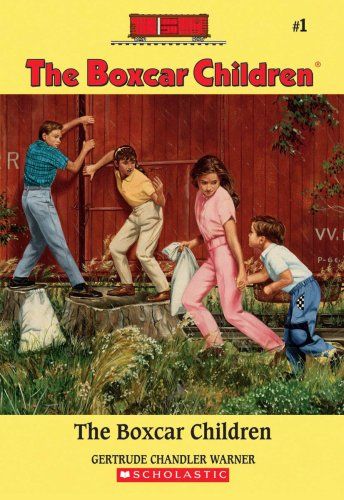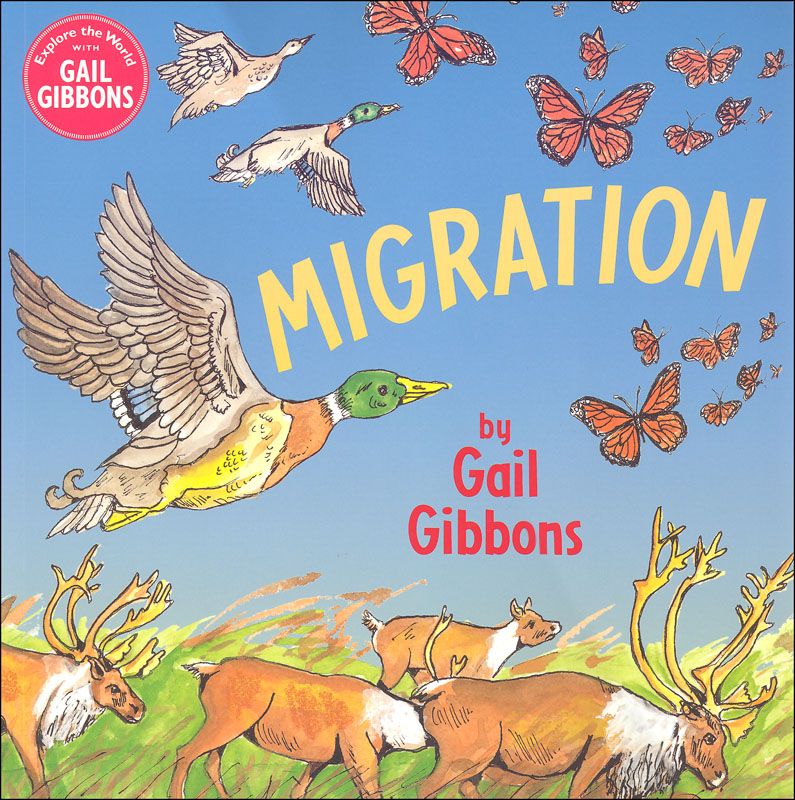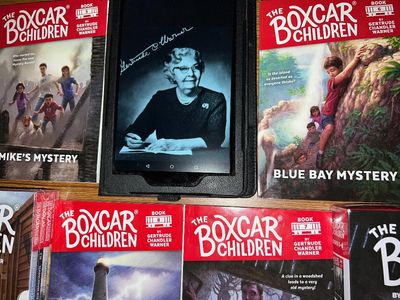Learn about Gertrude Chandler Warner's favorite insect and enjoy adventure and mystery in each of her books in the original Boxcar Children series.
Gertrude Chandler Warner (April 16, 1890 - August 30, 1979), best known for her series The Boxcar Children, had a lifelong dream of becoming an author. Born in Connecticut, this middle child would gift a handwritten book to her grandfather each year for Christmas. Gertrude loved reading and nature studies. She enjoyed her favorite book, Alice in Wonderland, studying and collecting butterflies, moths, and wildflowers, learning about birds, and creating a butterfly garden. A sickly child and young adult, Warner did not finish high school. Gertrude Chandler Warner never married and used much of her time to volunteer for organizations such as the American Red Cross.

The ideas for the adventures that the Boxcar children took came to her while she was recovering from various ailments. Warner would consider what she would like to do as a child, what adventures she would enjoy and also incorporate her love of nature and exploration.
Gertrude Chandler Warner wrote the first 19 books in the Boxcar Children series. Since then, other authors have added nearly one hundred books written in her style to the series. For Warner, quality literature for children needed to include the following characteristics:
- Kindness must be demonstrated to siblings.
- Characters must be respectful and mannerly.
- The diction must be high quality, with complete sentences and no slang used.
- The storyline must include suspense, wholesome entertainment, and adventures. 1
Enjoyable Works
The Boxcar Children series chronicle the adventures taken by four siblings, Henry, Jessie, Violet, and Benny. In the original book, the orphaned Cordyce children (the children's last name is changed to Alden in the updated versions) learn to survive on their own, living in an abandoned train boxcar until they are reunited with their grandfather. Each book within the series is set in a unique location and details a mystery that the children work together to solve. The first 19 books are written by Warner and are easily recommendable. The remainder of the series began to be published in the 1990s and includes things that are common of that time period. Consideration should be given before distributing the rest of the series as independent reading.
#1 The Boxcar Children

Geography
Because of Warner's deep appreciation for nature, and specifically butterflies and moths, children will learn about the migration pattern of three species of butterflies found throughout the world. Click the links below to learn more about each of the following species within the Lepidoptera family. 2
Use this map to demonstrate the migration patterns of these types of butterflies.
Extensions
Gertrude enjoyed studying butterflies and even created a garden for them to enjoy. Let's explore God's design for butterflies. Butterflies complete metamorphosis, the process of changing into an adult creature through multiple stages. Butterflies go through four stages:
- egg
- larva (caterpillar)
- pupa (chrysalis)
- adult (butterfly)
An exciting venture to complete is to raise butterflies from caterpillars. Kits are available that include everything needed for this task. Children will be fascinated by the visible changes to the caterpillars as they eat and grow, crawl to the top and form chrysalises, and emerge as butterflies.
To further visualize the stages of metamorphosis, children can select from among the following activities.
1. Metamorphosis playdough mats: children use playdough to make each stage of a butterfly's life cycle. Print and laminate these mats for ease of use.
2. Pasta metamorphosis: children use various types of pasta to illustrate each stage. For example, a small white bean (or piece of barley) could be used to illustrate the first stage (egg); a spiral noodle could illustrate the second stage (larva or caterpillar); a medium-sized shell could illustrate the third stage (pupa or cocoon); and a farfalle noodle could be used to illustrate a butterfly. Dividing a paper plate into quadrants and sketching a twig and leaf in each one provides a place to glue each piece of pasta. Finally, painting the pasta will transform the demonstration into a reference piece.
Finally, children can explore the symmetry found in butterflies through a painting art project. Simply print an outline of a butterfly, fold in half vertically, and paint only one half of the paper. Fold the painted side onto the other side to complete the design.
Additional Resources
A reading checklist of the first nineteen books to check off as each is completed
Gail Gibbons' Monarch Butterfly Workbook

Gail Gibbons Migration book

Footnotes
1.
Gertrude Chandler Warner - Wikipedia
2.
3 Incredible Butterfly Migrations - Australian Butterfly Sanctuary (australianbutterflies.com)
3.
Monarch Butterfly Caterpillar: Everything You Need to Know - AZ Animals (a-z-animals.com)
4.
Belenois java - Wikipedia
5.
Vanessa cardui - Wikipedia
6.
Painted Lady Butterfly: Identification, Facts, Lifespan, Pictures (butterflyidentification.com)




Join the conversation